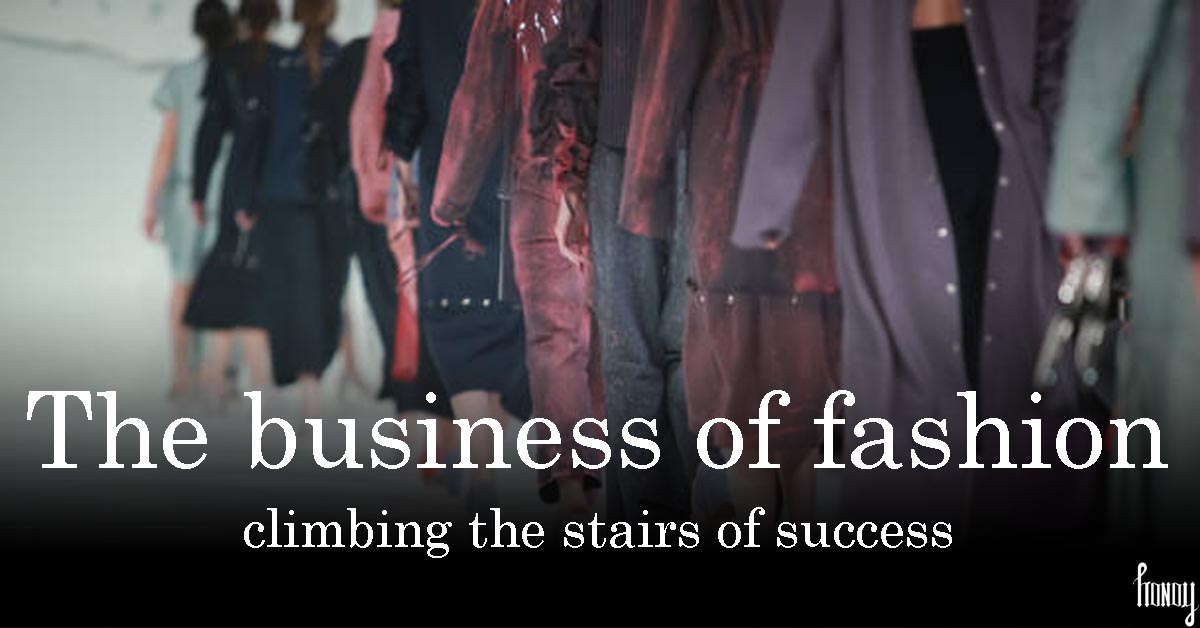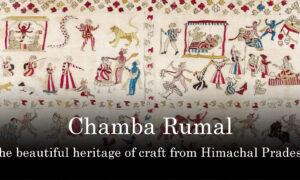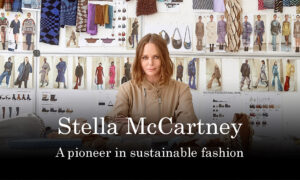As we have seen in the posts ‘understanding fashion’, we have come to understand the ever-changing and evolving world of fashion. What one sees on the designer runways, or the billboards of brands is just the tip of the iceberg. Behind all the glamour and glitz, creativity, and handwork, bridging the gap between the producers of fashion and consumers of fashion, lies a multi-layered, complex and dynamic industry known as the “Business of Fashion.” The fashion industry is a multi-billion-dollar global juggernaut. It is not only about selling clothes, but the business of fashion is the ‘art of selling clothes.’
Creating this world of desires requires, brand identities, marketing and promotions, fashion journalism, and engagement with the consumer at all levels. In this blog, we will delve into the intricacies of the fashion business, exploring the key drivers, challenges, and innovations that shape the way we look at fashion and everything that comes with it.
Fashion as an Industry
Fashion is more than a means of self-expression; it is a living-breathing giant of creating and selling clothes. It is the source of livelihood to countless people. Just to give you an idea how big it is, the global fashion market is estimated to touch over $1.7 trillion in 2021 and at the present it engages approximately 430 million people from all over the world, which means roughly 12.6% people working around the globe are contributing to the business of clothes directly or indirectly. As seen in the posts discussing the type of designers and jobs available, the fashion industry has a wide range of businesses, including clothing, footwear, accessories, and even beauty products.
The Business of Fashion not only involves designers, manufacturers, wholesalers, retailers, marketers, and consumers but also has journalists, publishing houses, online media companies involved, and all interconnected in a complex web.
Business of fashion – three core components
To accurately understand the business of fashion, it is essential to identify the three core components:
Design and Creativity
The fashion industry exists because of design. Creating concepts from informed trends and styles and converting these ideas into clothes and work of wearable arts is what fashion designers do. And this is what starts the whole chain of fashion business.
Manufacturing and Supply Chain
The creativity is only supported with the ability of converting the visions if designers into reality and this is where everyone involved in manufacturing comes into play. This often involves sourcing raw materials like fabrics and accessories, patternmaking, cutting, sewing, and quality control. Supply chains are intricate and can span multiple countries and involving various stakeholders.
Retail and Distribution
To make the fashion reach its destination in the consumers hands involves decisions about where and how to sell the products – like physical stores, e-commerce, or a combination of both.
The Power of Branding – the pillar of business of fashion
Branding is simply not just about logos and labels; it’s about creating an identity for the product that the consumer identifies with. A successful fashion business will go beyond the calculations of profit and loss; they tell stories, evoke emotions, and create a sense of connection with its audience. This is what we call as ‘Brand Identity’.
Every successful fashion brand has a distinct identity, and this vision is made up of the brand’s values, aesthetics, and target audience. Brands like Dior, Sabyasachi, Mango have created iconic identities that transcend generations, geography, and identities. To create this brand identity for a fashion business, fashion brands invest heavily in marketing and promotion. They collaborate with celebrities and create in social media campaigns to attract the consumer. They organize fashion shows to create buzz around new design collections.
In recent years, sustainability and ethics have also become a talking point for fashion brands. Brands that highlight their sustainable practices and ethical sourcing are gaining favor with conscious consumers. Sustainability isn’t just a trend; it’s a fundamental shift in the industry.

The business of fashion is based on the pillars of production, marketing, branding and technology
The Influence of Technology
Technology has always led the way in revolutionizing the fashion industry from time to time. From the industrial revolution to the introduction of AI in the fashion shows, technology is surely a game-changer. Fashion designers now employ digital tools like Computer-Aided Design (CAD) software to create and refine their designs. Software like photoshop and Corel are standard industry requirements. They are also taught in fashion schools now.
The rise of e-commerce has transformed how consumers shop for fashion and the pandemic has been a catalyst of unimaginable importance to push into the new era of online and virtual shopping. Virtual try-ons, augmented reality (AR), and artificial intelligence (AI) are changing the user shopping experience. Not only this, but this digitisation has changes how fashion companies use big data to understand consumer preferences and behavior. This data-driven approach allows for highly targeted marketing and product recommendations, boosting sales and brand loyalty.
Challenges in the business of Fashion
Just like every other work of line, the fashion industry does not come without its challenges. The impact of fashion is huge not only individual lives, but also on the society and the earth. It is the second most polluting industry behind the oil industry. Fast fashion, which is the rapid production and consumption of fashion products, has detrimental environmental and social impacts. Thus, the fashion industry continuously and increasingly faces pressure to adopt more environmentally friendly and sustainable ethics.
Copying and counterfeiting in the fashion industry is as old as he industry itself. It is a constant struggle of designers and business owners to protect their original designs from getting downgraded and leading to significant revenue loss. Protecting intellectual property has always been and will continue to be a challenge.
Ever since the pandemic of COVID-19 has changed the way we live, even the fashion industry has found its cracks and disruptions. Today, as we understand the fact that global supply chains are vulnerable to disruptions, fashion companies are reevaluating their supply chain strategies to ensure resilience. These are few challenges that every business of fashion must deal with in some form or the other. What do you think is the future of fashion industry and how can you contribute to it as part of the solution.
Conclusion
So far, we have seen how the business of fashion is a captivating world where creativity meets commerce. It’s an industry with immense economic power and cultural influence. However, it’s also a sector which constantly changes, largely governed by consumer demand, technology and now sustainability. In this blog, we’ve identified the multifaceted nature of the fashion business, the creative forces that drives it and the economics requirement that sustains it. We saw branding as a powerful tool, technology as a game-changer, and the challenges it faces that pushes the boundaries of the nature of the industry.





























Pingback: 13 elements of a successful fashion business model